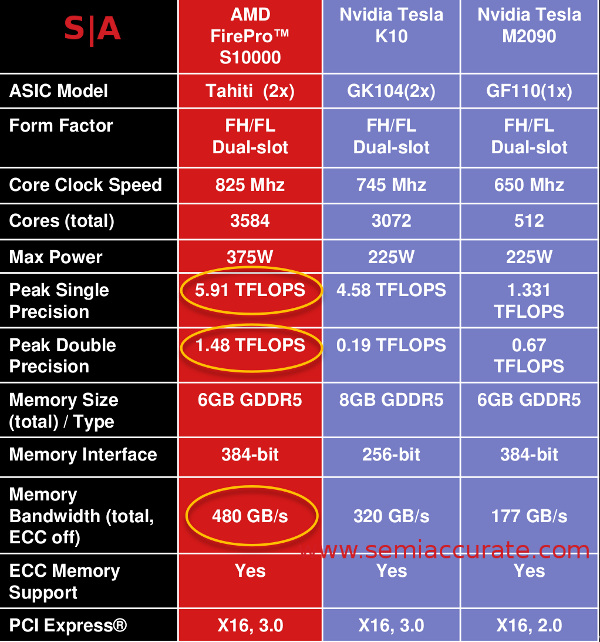Strange thing is, according to SemiAccurate it uses two Tahiti LE salvage chips (28 CUs) at 825 MHz, while one could get the same FLOP/s rating also with two full Tahitis at only 725 MHz, the latter version probably consuming quite a bit less power (especially when binned for a reduced voltage). I never thought the rasterizer and ROP performance would be that important in that market.The article on ComputerWorld was removed. AMD released the FirePro S10000 (not SM10000) today and it's really a dual-GPU board, which was showed by Mark Papermaster this summer.
http://www.amd.com/PublishingImages...tShots/375WPNG/52625A_FirePro_S10000_375W.png
http://www.amd.com/us/products/workstation/graphics/firepro-remote-graphics/S10000/Pages/S10000.aspx
http://www.amd.com/us/press-releases/Pages/amd-most-powerful-server-graphics-2012nov12.aspx

By the way, AMD's data sheet for the S10000 contains an error for the stated performance/Watt. While the claimed 3.94 GFlops/W for DP matches the 375W TDP and the 1.48 TFLOP/s, the 5.77 GFlops/W in SP should probably read 15.77 GFlops/W.
